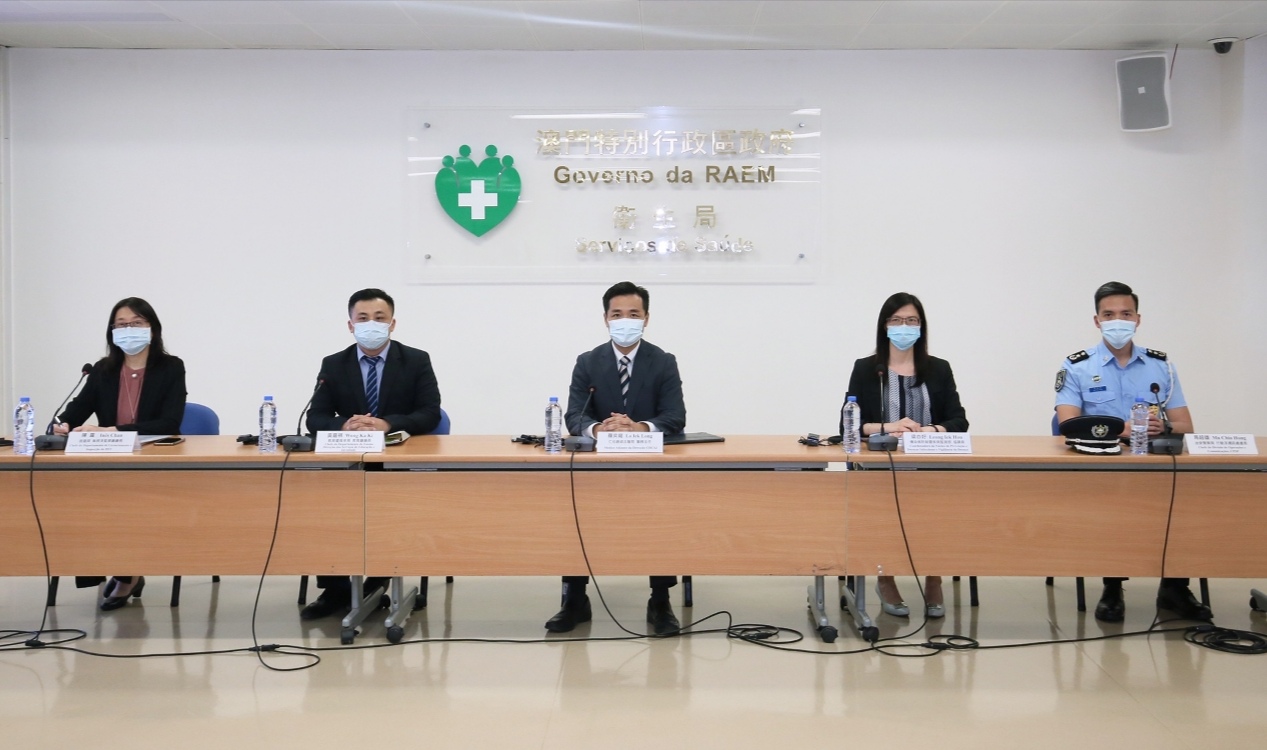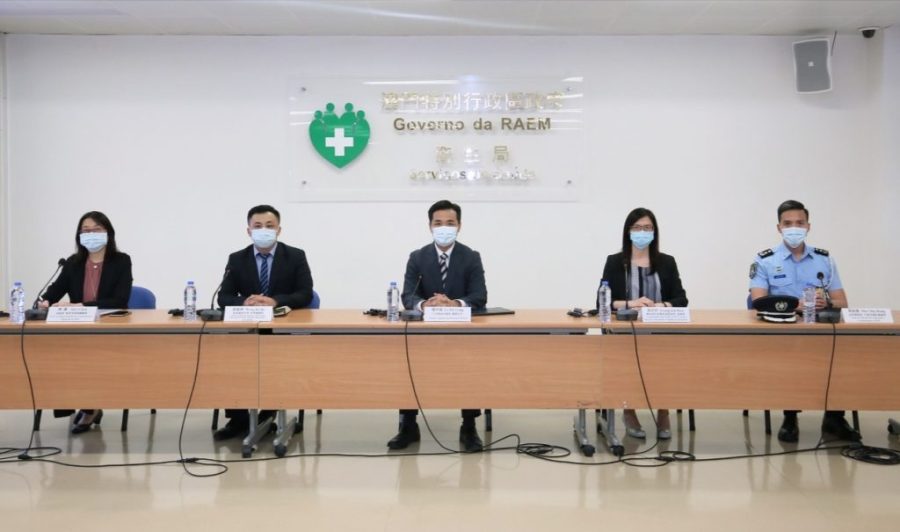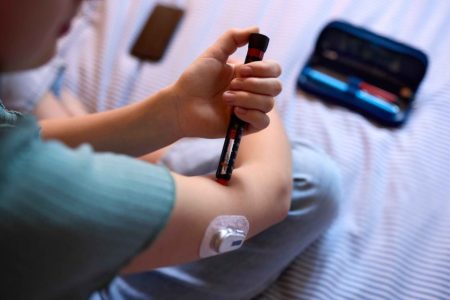Addressing Tuesday’s daily press conference about Macau’s novel coronavirus (COVID-19) situation, Alvis Lo Iek Long, a clinical director of the public Conde S. Januário Hospital Centre, said that the gradual relaxation of the current entry restriction and quarantine measures between Macau and Guangdong could only get off the ground with “complementary” measures in place, such as the mutual recognition of the Macau and mainland versions of the health code system and an enhanced COVID-19 testing capability for all those travelling between the two regions.
A QR three-colour code system, officially known as “Macau Health Code”, started operating at 9 a.m. on Sunday, replacing the Health Bureau’s (SSM) digital health declaration that is required at border checkpoints and for entering public administration premises, casinos and other premises.
Previously, there were two different versions of the bureau’s digital health declaration, one to enter public administration premises, casinos and other private premises such as banks, the other to enter Macau.
Currently, the “Macau Health Code” system can only be used for entering Macau and entering various venues in the city. The local authorities and their mainland counterparts are still discussing the mutual recognition of the Macau and mainland versions of the health code system.
Since February 20, non-resident workers who have been in the mainland within 14 days prior to their intended entry into Macau have to go into quarantine and medical observation for 14 days at a facility in Zhuhai arranged by the health authorities there and then obtain a health certificate issued by the Zhuhai health authorities confirming that they have not been infected with the novel coronavirus disease, before they are allowed to enter Macau.
All travellers arriving in Guangdong from overseas as well as Hong Kong, Macau and Taiwan have had to undergo 14 days of “concentrated” quarantine and nucleic acid testing (NAT) there since March 27.
Chief Executive Ho Iat Seng told reporters last month that the current entry restriction and quarantine measures between Macau and Guangdong could only be gradually lifted in the near future if Macau sets up its own health code system that would be compatible with the mainland’s health code system.
When asked about the possible gradual relaxation of the current entry restriction and quarantine measures between Macau and Guangdong during yesterday’s press conference, Lo replied that the implementation of any new measures has to be accompanied by “complementary” measures. Lo said that the necessary “complementary” measures that enable the gradual lifting of the current entry restriction and quarantine measures between the two regions would include the mutual recognition of the health code system’s local version and mainland version, and the enhanced capability to carry out nucleic acid testing for those travelling between the two regions.
Lo underlined that the gradual lifting of the current entry restriction and quarantine measures between Macau and Guangdong could only get off the ground after the necessary “complementary” measures are well prepared. Lo reaffirmed that the local government will immediately make an announcement when there is a final decision to roll out any measures to gradually lift the current entry restriction and quarantine measures, urging residents to be “patient”.
Mutual recognition talks
The Health Bureau’s Control of Communicable Diseases and Surveillance of Diseases Department Coordinator Leong Iek Hou said during yesterday’s press conference that the local authorities are still discussing with their mainland counterparts the mutual recognition of their health code systems, adding that she expected both sides to reach an agreement on the matter soon.
Real-name registration is used in the “Macau Health Code” system, which asks its registrants three things, namely 1) symptoms, 2) COVID-19-patient contact history, and 3) travel history. The new code consists of three colours: red, yellow and green.
After the registrants fill in their personal and contact information and answer the three questions, the system will then compare them to the bureau’s database on all the information related to local COVID-19 cases, before generating a health code – either in red, yellow or green – for each registrant.
Red indicates a confirmed or suspected COVID-19 case, or a person who has been in close contact with confirmed COVID-19 patients, or a person who admits that within the past 14 days he or she has been in the countries or regions whose visit requires him or her to undergo quarantine and medical observation.
Non-residents whose colour code is red are denied entry into Macau, while residents will be immediately transferred to the public hospital for medical tests and possible hospitalisation. Red also means that the person is barred from entering public administration premises, casinos and other private premises such as banks.
Yellow indicates a person who has been in general (rather than close) contact with confirmed COVID-19 patients, or a person who confirms that he or she has come down with a fever, acute cough, sore throat or shortness of breath.
Yellow merely requires the person to practise health self-management, such as checking one’s temperature at least twice a day and avoiding crowded places.
Green means that the person is not a formerly or currently confirmed or suspected COVID-19 case, is not a former or current contact of an infected person, has no symptoms, and has not been in the countries or regions whose visit requires him or her to undergo quarantine and medical observation.
The colour code is available in Macau’s two official languages, Chinese (in traditional and simplified characters) and Portuguese, as well as English, Macau’s lingua franca.
According to Xinhua, the mainland’s health code system is a mobile app that generates a coloured QR health code. A red code indicates that the holder is a confirmed or suspected COVID-19 patient, a yellow one indicates a close contact, while a green one means that the holder has had no contact with any case of the highly infectious disease.
No new COVID-19 case for 27 days
Meanwhile, Lo pointed out during Tuesday’s press conference that Macau has not confirmed a new COVID-19 case for 27 consecutive days.
Macau has so far confirmed 45 COVID-19 cases. The 10 patients (seven tourists from Wuhan and three locals) in Macau’s “first wave” of the COVID-19 infection – which lasted from January 22 to February 4 – have all been discharged, while 29 of the 35 patients in the “second wave” – which began on March 15 – have been discharged since last month. Among Macau’s 45 COVID-19 cases, 43 have been classified as imported, while two have been classified as “cases related to imported cases”. Currently, just six COVID-19 patients remain hospitalised, all of them in stable condition.
Lo said that 18 discharged patients are still undergoing their 14 days of recovery period isolation at the Health Bureau’s Public Health Clinical Centre in Coloane.
Meanwhile, Lo also reaffirmed that the government will continue with its facemask purchase scheme this month – meaning that the scheme will be running for 13 rounds, before reviewing the scheme by the end of this month so as to determine whether the scheme should continue next month. Lo said that the government will take a number of factors into consideration when assessing the possible continuation of the scheme, such as the development of the COVID-19 epidemic in Macau and elsewhere, the necessity of the scheme’s continuation, and the supply of facemasks in the private market.
(The Macau Post Daily/Macau News)
PHOTO © Government Information Bureau (GCS)






